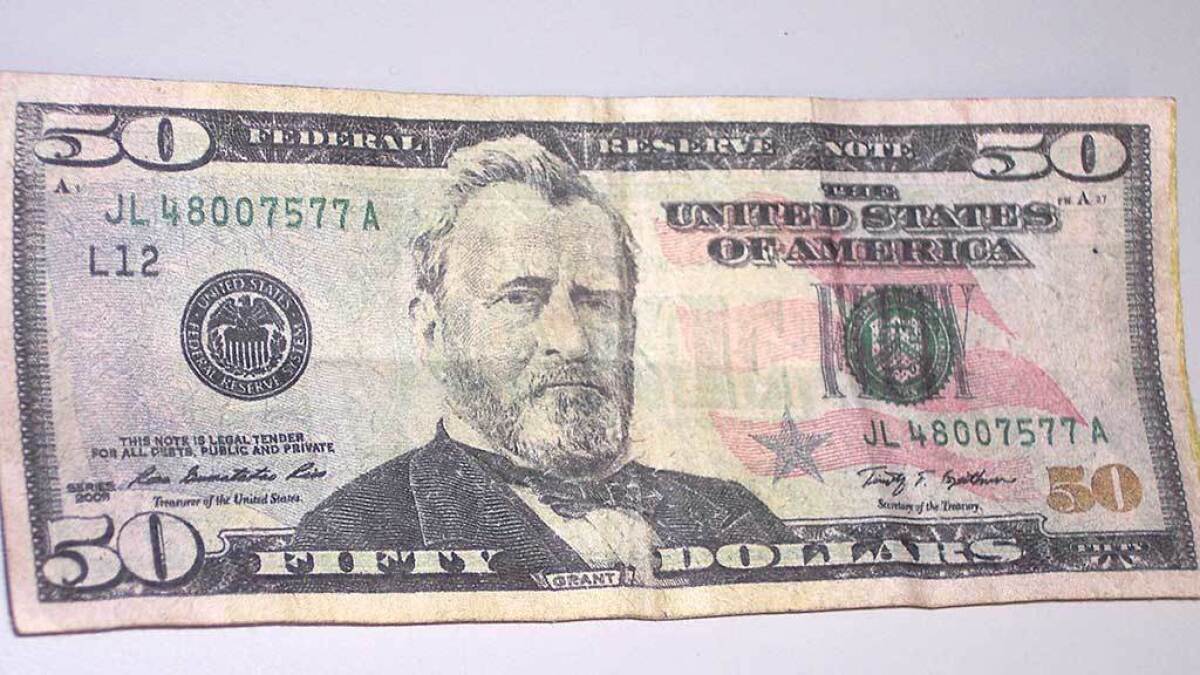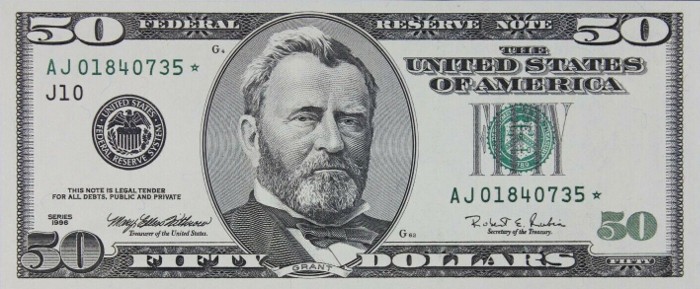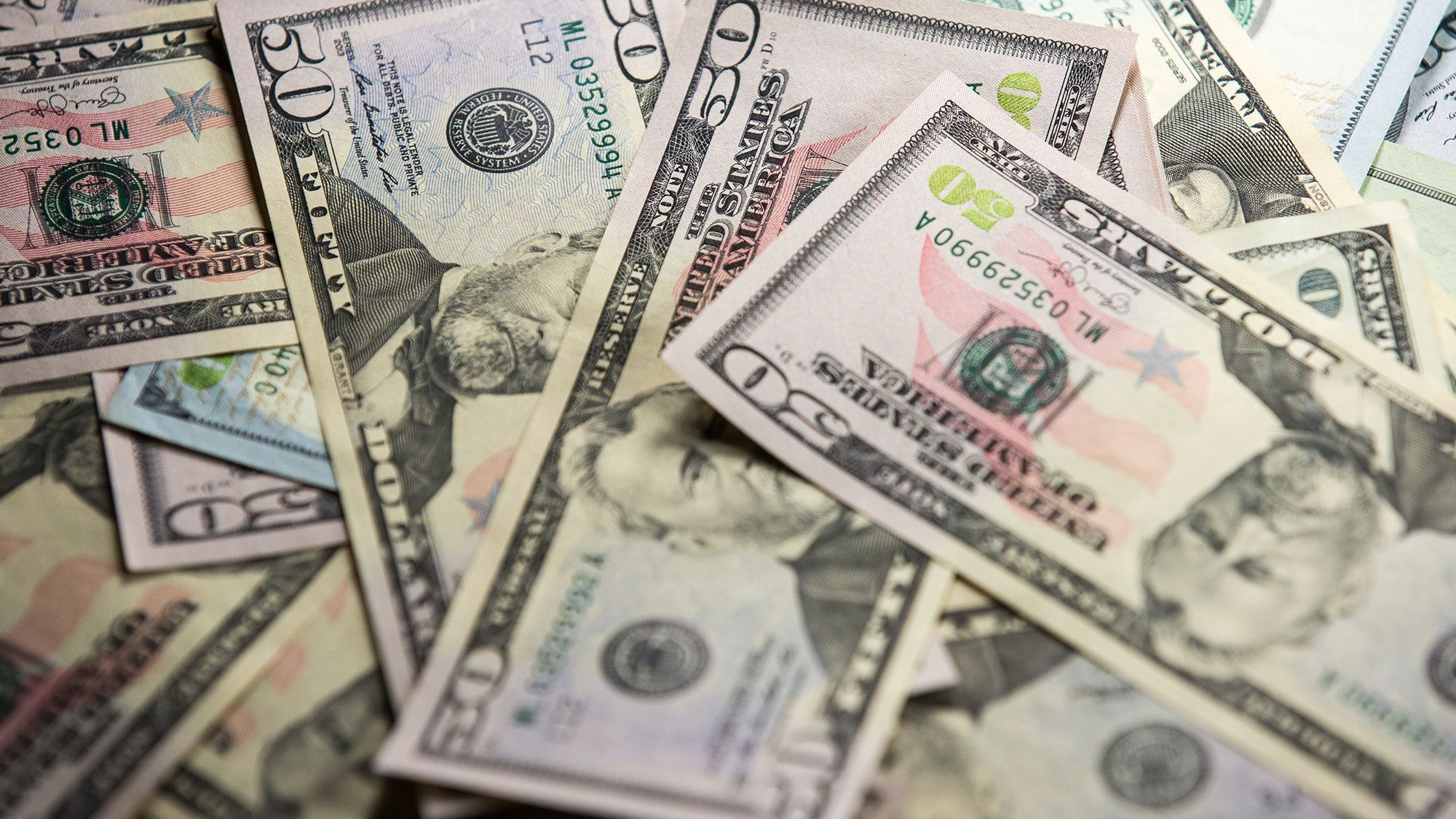Who is On The 50 Dollar Bill? – The $50 bill is one of the more iconic denominations of U.S. currency. Among the many fascinating aspects of American paper money, a notable one is the person featured on each bill. The $50 bill is graced by the portrait of Ulysses S. Grant, the 18th President of the United States. Many people are familiar with the faces of the more common bills, such as George Washington on the $1 bill or Abraham Lincoln on the $5 bill, but fewer may know the story of who is on the 50 dollar bill.
In this article, we will explore not only the identity of the figure on the $50 bill but also the historical significance of Ulysses S. Grant, the evolution of the fifty dollar bill, and its place in American history.
Who Is On The 50 Dollar Bill?
To start with, the individual featured on the $50 bill is Ulysses S. Grant, a military leader and political figure who played a crucial role in the history of the United States. Born Hiram Ulysses Grant on April 27, 1822, in Point Pleasant, Ohio, Grant grew up to become one of the most influential figures in American history.

He is primarily remembered for his leadership during the Civil War as the commanding general of the Union Army, a position that ultimately led to his election as the 18th President of the United States.
Grant’s military prowess and efforts to preserve the Union were key to his legacy, which is why he was chosen to appear on the $50 bill.
Grant’s leadership during the Civil War, particularly his victories at significant battles such as Vicksburg and Chattanooga, helped solidify his reputation as a capable and determined leader.
His success in these military campaigns ultimately led to his acceptance of the Confederate surrender at Appomattox Court House in 1865, marking a turning point in American history.
This event was instrumental in preserving the Union, which became the foundation for Grant’s decision to run for president.
The Military Hero Who Became President
Before we dive deeper into why Ulysses S. Grant was selected for the $50 bill, it is worth noting his impressive military background. As General-in-Chief of the Union Army during the Civil War, Grant was at the forefront of the effort to defeat the Confederacy.
His strategy and leadership enabled the North to gain the upper hand, and in 1865, he famously accepted the surrender of General Robert E. Lee at Appomattox Court House, effectively bringing the Civil War to an end.
After the war, Grant’s popularity skyrocketed, and in 1868, he was elected president. His two terms in office were marked by a commitment to Reconstruction, during which he focused on ensuring civil rights for newly freed African Americans and rebuilding the post-war economy.
However, his presidency was also marred by corruption scandals involving some of his cabinet members and close associates.
Despite these challenges, Ulysses S. Grant is still remembered today for his crucial role in preserving the Union and his efforts to extend civil rights during a turbulent time in American history.
His status as a war hero and president is a central reason why he was chosen to appear on the $50 bill.
The Evolution Of The $50 Bill
Now that we know who is on the $50 bill, it’s interesting to look at how this currency has evolved over time. The $50 bill has gone through several redesigns since its inception, reflecting changes in security measures and artistic design. Ulysses S. Grant has been the face of the $50 bill since 1913, when the U.S. Treasury began issuing Federal Reserve Notes featuring portraits of prominent historical figures.

Before Grant’s appearance on the $50 bill, the denomination featured portraits of other notable figures, such as Henry Clay and William H. Seward.
However, it was decided that Grant, due to his legacy as both a military leader and president, would be a fitting figure to appear on the note.
The first version of the $50 bill featuring Grant was issued as part of the Series of 1914, and since then, it has undergone various updates and redesigns.
Some of the more significant changes to the $50 bill include the introduction of new security features designed to prevent counterfeiting.
The addition of a security thread, a watermark, and microprinting are just a few of the updates that have been made over the years.
In fact, the modern $50 bill, which was redesigned in 2004, features color-shifting ink, enhanced microprinting, and a watermark that displays Grant’s likeness when held up to the light.
The Rare and Valuable $50 Bills
Although $50 bills are not the most commonly circulated U.S. currency, they can be quite valuable to collectors. Some rare and misprinted $50 bills have sold for significant amounts at auction, especially if they are part of limited series or have unique printing errors.
For example, an 1862 $50 Legal Tender Note featuring Alexander Hamilton’s portrait is highly sought after by collectors, and examples of this note can fetch upwards of $10,000 depending on condition.
Likewise, 1928 $50 Gold Certificates, which were issued before the U.S. dollar was fully decoupled from the gold standard, are also highly collectible. These notes can sell for tens of thousands of dollars, especially if they are in pristine condition.
Even modern $50 bills can become valuable if they feature unusual serial numbers, printing errors, or are part of a rare series.
Why is The $50 Bill Rare in Circulation?
While the $50 bill is an essential part of American currency, it is one of the least circulated denominations in comparison to others like the $1 and $20 bills.
According to the Federal Reserve, as of 2024, $50 bills account for just 3.5% of all U.S. currency in circulation, a figure far less than the widespread $1 bill.
There are several reasons why the $50 bill is not as commonly seen in everyday transactions. One reason is that the Bureau of Engraving and Printing produces far fewer $50 notes than other denominations.
In fact, only 153.6 million $50 bills were printed in 2020, compared to over 1.6 billion $20 bills.
Another factor that contributes to the relative rarity of the $50 bill is merchant reluctance to accept them. Some businesses are wary of counterfeit bills, and $50 notes are more frequently targeted by counterfeiters than smaller denominations.
Additionally, there is a popular misconception that $50 bills are linked to bad luck, and this belief may deter some people from using them.
The Future Of The Fifty Dollar Bill
Despite its relative scarcity in circulation, the $50 bill continues to play an essential role in the U.S. currency system. Even with the rise of digital payment methods, cash remains an important means of transaction for small businesses, low-income households, and privacy-conscious individuals.
For now, there are no indications that the U.S. Treasury plans to discontinue the $50 bill or replace Ulysses S. Grant’s portrait with another figure.
As such, the $50 bill is likely to remain an integral part of U.S. currency for the foreseeable future. Whether it’s used for everyday transactions, stored as part of a collection, or appreciated for its historical significance, the $50 bill remains a unique and fascinating piece of paper money.
Conclusion
The individual featured on the $50 bill is Ulysses S. Grant, a military hero and two-term president who helped preserve the Union during the Civil War and advanced civil rights during Reconstruction. His legacy as a leader both in the battlefield and the White House makes him a fitting choice for the fifty dollar bill. The bill itself has undergone significant design changes over the years, with modern security features ensuring that the note remains a trusted and integral part of the U.S. currency system.
The $50 bill, though not as commonly used as some other denominations, continues to capture the attention of collectors and history enthusiasts. Who Is On The 50 Dollar Bill? With its rich history and the enduring legacy of Ulysses S. Grant, the $50 bill is much more than just paper money—it’s a testament to one of America’s most significant figures. So the next time you come across a fifty dollar bill, take a moment to appreciate the craftsmanship and the story behind it.

